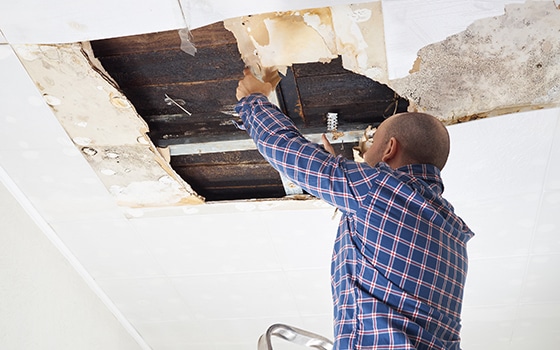-
InsightsInsight - Personal Injury - POSTED: September 23 2020
DIY and asbestos: the hidden danger for self-renovators
Our personal injury lawyers explain how to avoid exposure to asbestos.
- Share this article
- Print this article
-
-
For many DIY home renovators, asbestos and industrial disease are the last thing on their minds. In fact, very few are aware of the potential hidden danger of asbestos exposure that may be lurking in any property more than 30 years old.
While the UK is short on statistics in this area, reports show that more than 60% of home renovators in Australia, for example, expose themselves to asbestos unknowingly. With many homes in the UK being built before 1980 when asbestos use was at its peak, there is a real chance home renovators will come across asbestos.
The same risks of exposure apply to professional builders, but it is reasonable to expect them to know the hazards of asbestos and take full precautions.
Unlike professional builders, those embarking on DIY need to take special care because, in addition to negative health consequences, it is much harder to put together a claim. Plus, those who renovate a home with asbestos which exposes others in the neighbourhood to the fibre, also risk being fined or being open to future compensation claims.
History of asbestos
Asbestos is a naturally occurring fibrous material which was popular in building products from the 1940s to early 80s. So much so, it is estimated that asbestos was used in over 3,000 products. During the 1960s and 70s the UK imported more than 170,000 tonnes of asbestos each year.
It was popular because it was cheap, strong, a good insulator, widely available and fire and heat resistant. However, from 1985 the manufacture and supply of the most hazardous type of asbestos products were banned, and from 1999 all asbestos products were made illegal in the UK. This was because inhaling asbestos fibres can cause asbestos related diseases, which are often fatal.
Sadly, 5,000 people still die each year because of asbestos exposure. This is partly because asbestos was so greatly used that it remains present in many UK buildings.
Asbestos is often hidden
Asbestos can be hidden throughout an older property and it comes in all different shapes and sizes. The three main types of asbestos are known by the colours (in descending order of danger): blue, brown and white.
Managing asbestos does not always mean it has to be removed. Sometimes it may be safer to leave it and carefully manage the environment. However, asbestos should only ever be handled by a specialist. If you think you have identified asbestos in your property, it’s vital you ask an expert to check and get it safely removed or managed.
The Health and Safety Executive has a useful diagram which shows where you might expect to find asbestos in older homes. In particular, asbestos insulation board was heavily used in older homes for several domestic products, including:
- Ceilings, including in tiles and some Artex products
- Bath panels
- Partition walls
- Window frames
- Boilers
- Water storage tanks
More generally, asbestos can be found in the home in:
- Pipes: asbestos cement and lagging
- Rooves – corrugated sheets and tiles
- Vinyl floor tiles
- Asbestos spray
Asbestos related diseases
The symptoms of asbestos exposure can take 10 to 60 years to develop and manifests in several different diseases.
- Mesothelioma is a fatal cancerous tumour that encases the linings of the lung (or occasionally abdomen). This kills about 2,500 in the UK every year and is currently incurable. It can be caused by even light exposure, but the greater exposure, the greater the risk.
- Asbestos-related lung cancer kills about 2,500 a year. Heavy asbestos exposure is required, often in combination with smoking.
- Asbestosis is a non-cancerous scarring of the lungs itself (mild to occasionally fatal), caused by heavy asbestos exposure.
- Pleural thickening is non-cancerous scarring of the lung’s inner lining (mild to serious, rarely fatal). It can be caused by even light exposure.
- Pleural plaques are non-cancerous scars on the outer lining of the lung, caused by significant asbestos exposure – nearly always symptomless and if so, not compensable in England.
Brachers has successfully handled many asbestos disease claims for people who have been exposed to asbestos. This includes those who have stripped out old properties containing asbestos-based products during their work.
If you or your family has suffered an asbestos-related cancer or disease contact our specialist Personal Injury and Industrial Disease team today.
This content is correct at time of publication
Can we help?
Take a look at our Personal Injury page for useful information, resources, guidance, details of our team and how we may be able to help you
-
Key contact:
Get in touch
Please fill out the below form or alternatively you can call us on 01622 690691

